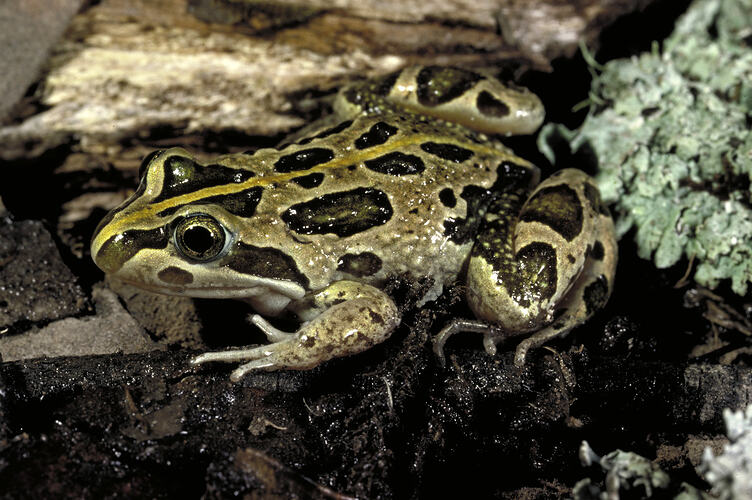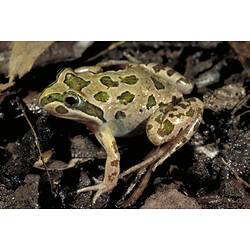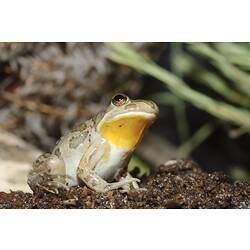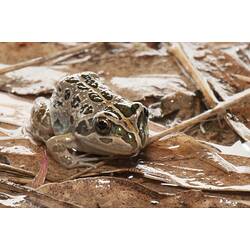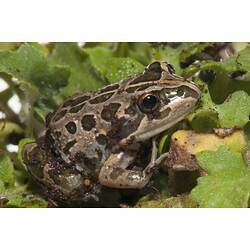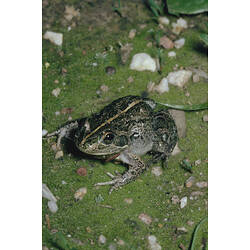General Description
Body brown to green with a series of large, regular-shaped dark brown to dark olive-green patches. Most individuals also have a yellow, orange or red stripe down the middle of their back. Dark stripe from snout through eye to the top of the front leg. White belly and smooth skin. Toes unwebbed. Body length up to 4.5 cm. There are three different call races of the Spotted Marsh Frog09/11/2016 the southern call race's call is a short "click" that sounds similar to two small stones being struck together.
Biology
Females lay their eggs in floating foam masses. The tadpoles can take up to five months to change into frogs. Peak breeding occurs from spring to autumn, particularly after rain. Males float while calling, often covered by vegetation.
Distribution
Widely distributed across all of eastern Australia, including Tasmania, Victoria, eastern South Australia, New South Wales and Queensland.
Habitat
Most areas, preferring swamps, ponds or lagoons.
More Information
-
Animal Type
-
Animal SubType
-
Brief Id
A medium-sized frog with distinctive large regular-shaped brown or olive green blotches along back.
-
Colours
Black, Brown, Green, Cream, White, Orange, Red
-
Maximum Size
4.5 cm
-
Habitats
Wetland, Urban, DryForest, WetForest, Woodland, Mallee, Grassland
-
Diet
Insects
-
Endemicity
-
Commercial
No
-
Conservation Statuses
CITES: Not listed, FFG Threatened List: Not listed, EPBC Act 1999: Not listed, IUCN Red List: Least Concern
-
Taxon Name
-
Scientific Author
Günther, 1858
-
Common Name
Spotted Grass Frog
-
Other Names
Spotted Marsh Frog
-
Kingdom
-
Phylum
-
Subphylum
-
Class
-
Subclass
-
Order
-
Family
-
Genus
-
Species Name
tasmaniensis
